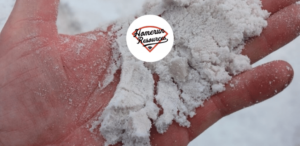In recent years, critical minerals have become a buzzword, yet the concept behind them seems newly minted. Suddenly, everything is “critical” in the resource world. But amidst this surge of attention, a fundamental issue arises—what exactly makes a mineral critical? As someone who has spent a lifetime immersed in the technical intricacies of the chemical and metallurgical properties of technology metals, I can tell you: it’s a complex question.
I’ve noticed a disturbing trend in many of the analyses I come across. As a rule, I stop reading any technical report as soon as I find a glaring error because one mistake often compounds into several. Unfortunately, in the world of critical minerals, these mistakes are rampant, especially among analysts with little to no understanding of chemistry or metallurgy. And that is a major problem.
Understanding the Core: Chemistry and Metallurgy
To the average investor, understanding the form and function of metals might seem like minutiae best left to professors or scientists. But I argue that without a proper grasp of the basic chemistry and metallurgy of these elements, any analysis of their economic importance is flawed from the start.
Let’s get one thing clear: metals are not stable in their natural form. Unlike gold, which can be found as a metal in nature, most metals exist in oxidized forms. Producing usable metals from ores involves reducing this oxidation, a complex process that transforms a mineral into its least stable form—a metal. Only a deep understanding of these processes allows us to accurately assess the feasibility and costs of mining, refining, and utilizing critical minerals.
Analysts often fall into the trap of assuming that the mineral found in the ground is ready for industrial use. This couldn’t be further from the truth. Take, for instance, neodymium—a crucial element for permanent magnets. The raw mineral containing neodymium needs to go through numerous steps: extraction, separation, purification, and alloying, all before it becomes a usable material. Each of these stages requires expertise, technology, and money—far more than what a simple price-per-kilogram calculation might suggest.
The Economics of Misunderstanding
The sheer volume of misinformation in so-called critical minerals analysis is staggering. Many of the financial pundits predicting prices for rare earths, lithium, or other critical elements five or ten years from now lack a basic understanding of the science behind these materials. Predicting future demand or supply without a deep comprehension of their chemical nature leads to misguided conclusions.
In my own reading, I regularly encounter errors like confusing common elements such as germanium, gallium, or manganese with rare earth metals. This misunderstanding stems from a lack of basic chemical education and results in inflated claims about supply and demand.
A Call for True Experts
As a metallurgist and a chemist, I do not claim to be a financial expert, but I do understand metals and minerals at a fundamental level. After decades of working in the trenches, I’ve seen firsthand how the lack of scientific knowledge can lead to poor decisions and misguided investments.
I believe it’s time to start holding analysts accountable for the quality of their assessments. Let’s create a system where we can measure the credibility of these analyses, based on sound scientific principles. This industry needs more experts, not fewer. And until we raise the standards of analysis, we risk continuing to misinform investors, governments, and industries alike.
For now, I will continue to hold my metaphorical lamp, like Diogenes, searching for truth in a world increasingly cluttered with half-truths and misunderstandings about the critical minerals we need to power the future.
Editor: Jack Lifton
Jack Lifton is the Co-Chair of the Critical Minerals Institute (CMI), which was founded in 2022 and is focused on building a North American critical mineral supply chain.…
This article was published by: Jack Lifton
Visit the original article here



